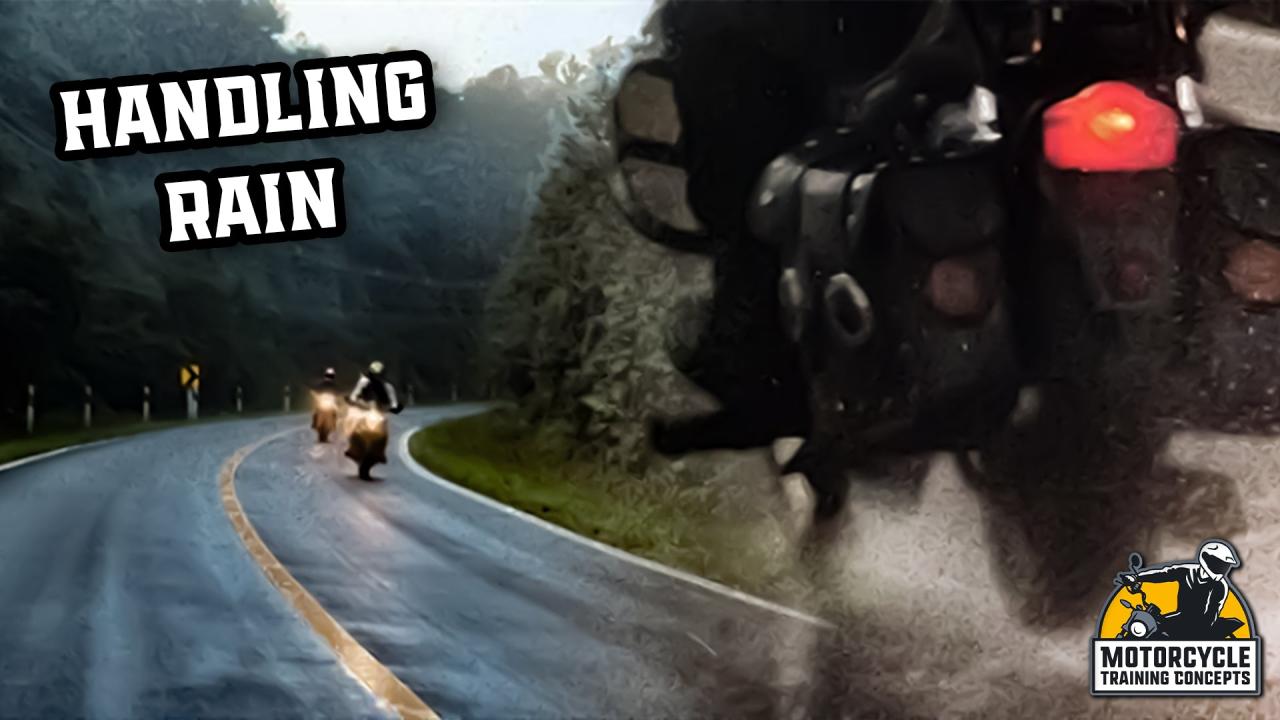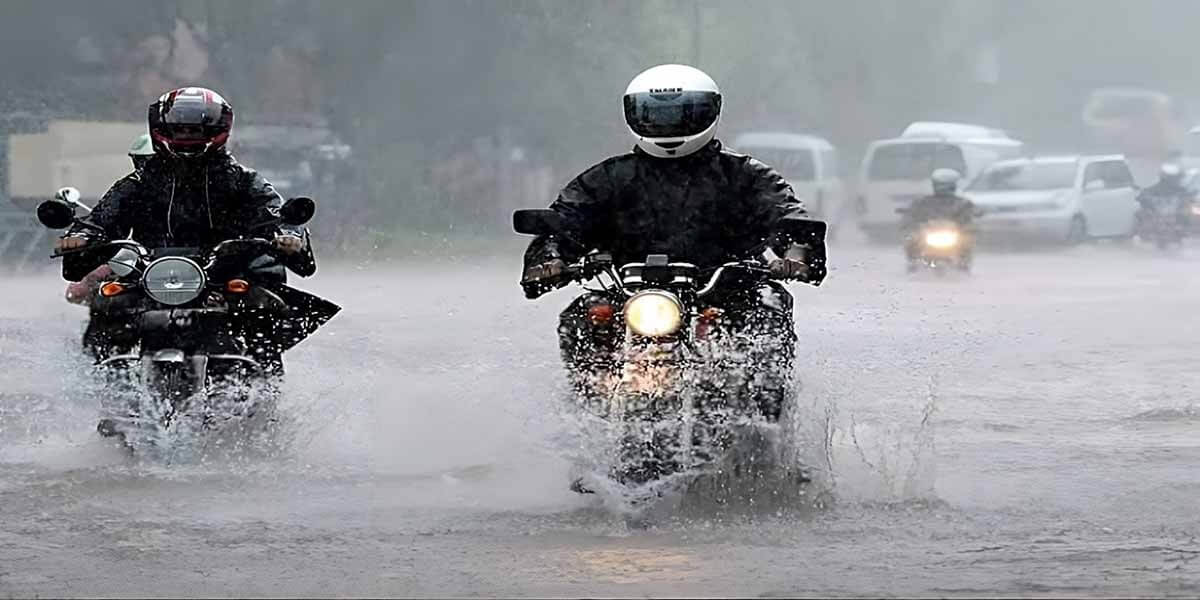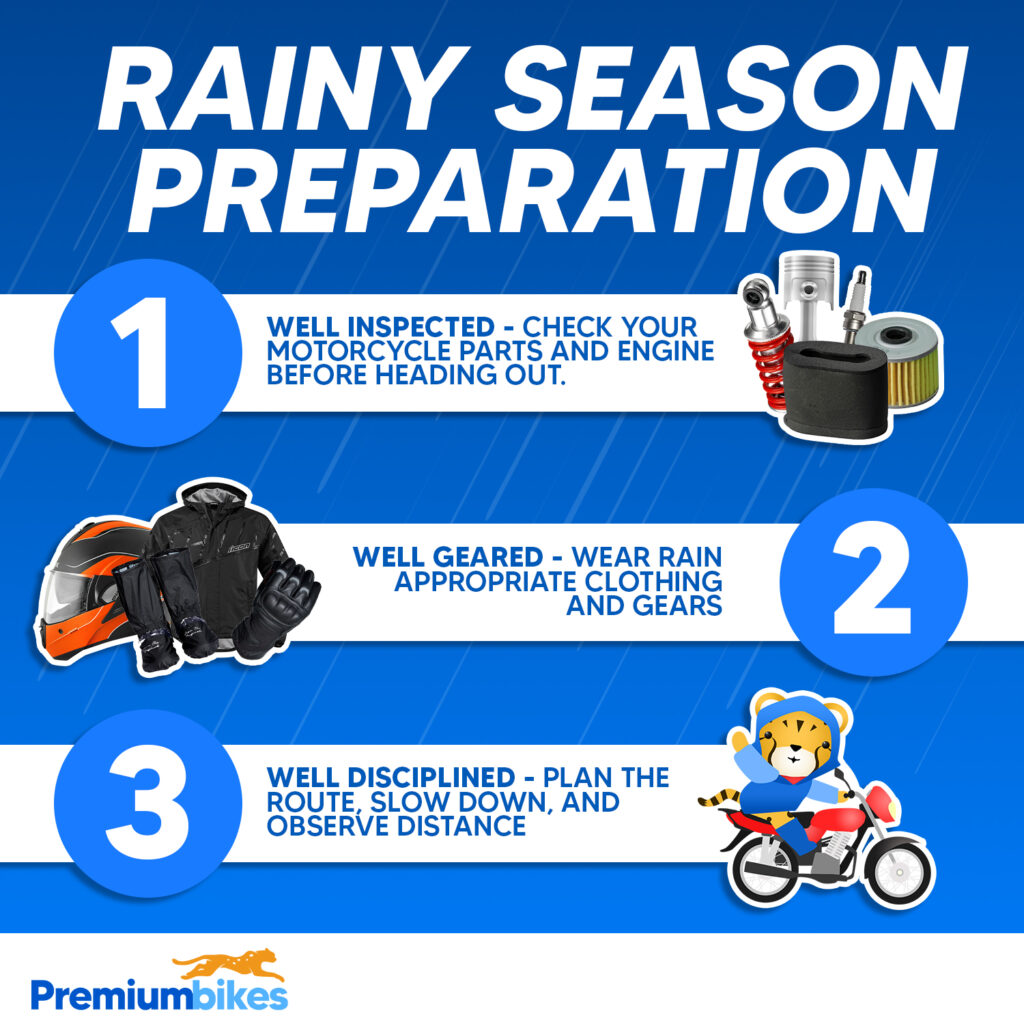Rain riding tips for motorcyclists sets the stage for this enthralling narrative, offering readers a glimpse into a story that is rich in detail and brimming with originality from the outset. Riding a motorcycle in the rain presents unique challenges that require specialized knowledge and skills to navigate safely.
This guide will delve into essential tips, gear, techniques, and preparation strategies to help motorcyclists conquer rainy weather with confidence and skill.
Importance of Rain Riding Tips

When it comes to riding a motorcycle in the rain, having specialized tips can make all the difference in ensuring a safe and enjoyable ride. These tips are crucial in helping motorcyclists navigate the unique challenges presented by wet road conditions.
Riding in the rain can significantly impact road conditions, making surfaces slippery and reducing visibility. This can pose a serious risk to motorcyclists, as it affects the handling and control of their bikes. Without proper knowledge and preparation, riders may find themselves at a higher risk of accidents or mishaps.
Impact of Rain on Road Conditions and Motorcycle Handling
- Rain can create slick surfaces, increasing the likelihood of skidding or losing traction.
- Reduced visibility due to rain and fog can make it challenging for motorcyclists to see obstacles or other vehicles on the road.
- Aquaplaning, where a layer of water builds up between the tires and the road, can lead to loss of control over the motorcycle.
- Braking distances are longer in wet conditions, requiring riders to adjust their speed and maintain a safe following distance.
Statistics on Rain-Related Motorcycle Accidents
According to a study by the National Highway Traffic Safety Administration, 46% of all motorcycle accidents occur in wet conditions.
Out of these accidents, a significant number are attributed to riders losing control on wet surfaces or being involved in collisions due to reduced visibility.
Essential Gear for Riding in the Rain

When riding a motorcycle in the rain, it is crucial to have the right gear to ensure safety and comfort. Here are some essential items that every motorcyclist should have when riding in wet conditions.
Rain Suit
Wearing a high-quality rain suit is essential for keeping dry and maintaining visibility during rainy rides. Look for a suit that is waterproof, breathable, and has reflective elements for increased visibility in low light conditions.
Anti-Fog Visor
An anti-fog visor is a must-have accessory for riding in the rain, as it helps prevent condensation and fogging on the visor, ensuring clear vision at all times. Make sure to choose a visor that is compatible with your helmet for a perfect fit.
Waterproof Gloves
Investing in a pair of waterproof gloves is essential to maintain a good grip on the handlebars and control of the motorcycle in wet conditions. Look for gloves that are not only waterproof but also provide good insulation to keep your hands warm.
Rain Boots
Having a pair of waterproof and slip-resistant rain boots is crucial for keeping your feet dry and maintaining traction on wet roads. Look for boots that offer ankle support and are comfortable for long rides.
Rain Jacket
A waterproof and breathable rain jacket is essential for protecting yourself from the elements while riding in the rain. Look for a jacket that is designed specifically for motorcyclists, with features such as adjustable cuffs and a high collar to keep water out.
Comparison of Brands
When choosing rain gear, it is important to compare different brands and types available in the market to find the best fit for your needs. Some popular brands known for their quality rain gear include Alpinestars, Rev’it, and Tourmaster. Consider factors such as waterproofing, breathability, comfort, and visibility when making your decision.
Riding Techniques for Wet Conditions

Rainy weather can significantly impact road conditions, making it crucial for motorcyclists to adapt their riding techniques for safety. Here are some effective tips to navigate wet roads:
Adjusting Riding Style
- Reduce speed: Slow down to maintain better control and traction on slippery surfaces.
- Smooth inputs: Avoid sudden acceleration, braking, or steering to prevent skidding.
- Use both brakes: Apply both front and rear brakes gently to avoid lock-ups.
- Stay loose: Keep a relaxed grip on the handlebars to allow for easy adjustments and prevent overcorrection.
Maintaining Proper Speed and Following Distance
- Reduce speed: Slow down to increase reaction time and minimize the risk of hydroplaning.
- Increase following distance: Leave extra space between you and the vehicle ahead to account for longer stopping distances.
- Avoid sudden maneuvers: Make gradual turns and lane changes to prevent loss of traction.
- Stay visible: Use headlights and reflective gear to enhance visibility in rainy conditions.
Preparing Your Motorcycle for Rainy Weather
When riding in the rain, it is crucial to ensure that your motorcycle is properly prepared to handle the wet conditions. This not only ensures your safety but also optimizes the performance of your bike in rainy weather.
Checking Tire Treads, Adjusting Tire Pressure, and Inspecting Brakes
Before heading out in the rain, it is essential to check your motorcycle's tire treads, adjust tire pressure, and inspect the brakes. Here's how you can do it:
- Check Tire Treads: Make sure your tires have adequate tread depth to provide sufficient grip on wet roads. Worn-out tires can increase the risk of skidding in rainy conditions.
- Adjust Tire Pressure: Proper tire pressure is crucial for optimal traction on wet surfaces. Check your motorcycle's manual for the recommended tire pressure and adjust accordingly.
- Inspect Brakes: Ensure that your brakes are in good working condition before riding in the rain. Wet roads can significantly affect braking distance, so having responsive brakes is essential for safety.
Proper tire maintenance and brake inspection are key factors in ensuring safe riding in rainy weather.
Importance of Proper Maintenance for Optimal Performance
Regular maintenance of your motorcycle is vital for optimal performance, especially in rainy weather conditions. Proper maintenance includes:
- Checking and replacing worn-out tires to ensure adequate traction on wet roads.
- Regularly inspecting and adjusting tire pressure to maintain optimal grip.
- Ensuring that brakes are regularly serviced and responsive to reduce braking distance on slippery surfaces.
- Checking all lights and signals to ensure visibility in rainy conditions.
By following these maintenance practices, you can enhance your safety and overall riding experience in rainy weather.
Conclusive Thoughts
In conclusion, mastering rain riding tips for motorcyclists is not just about braving the elements but about ensuring safety and enhancing the overall riding experience. By following the guidance provided in this comprehensive guide, riders can tackle wet conditions with ease and enjoy the thrill of motorcycling even when the skies are gray.
Stay safe, stay prepared, and keep riding on, no matter what the weather forecast may bring.
Top FAQs
What are the key factors to consider when riding a motorcycle in the rain?
Some key factors to consider are reducing speed, increasing following distance, using appropriate rain gear, and maintaining proper visibility.
How does rain affect road conditions and motorcycle handling?
Rain can reduce traction, increase braking distances, and create slippery surfaces, impacting both road conditions and motorcycle handling.
Why is it important to prepare your motorcycle for rainy weather?
Preparing your motorcycle ensures optimal performance in wet conditions, reduces the risk of accidents, and enhances overall safety.














